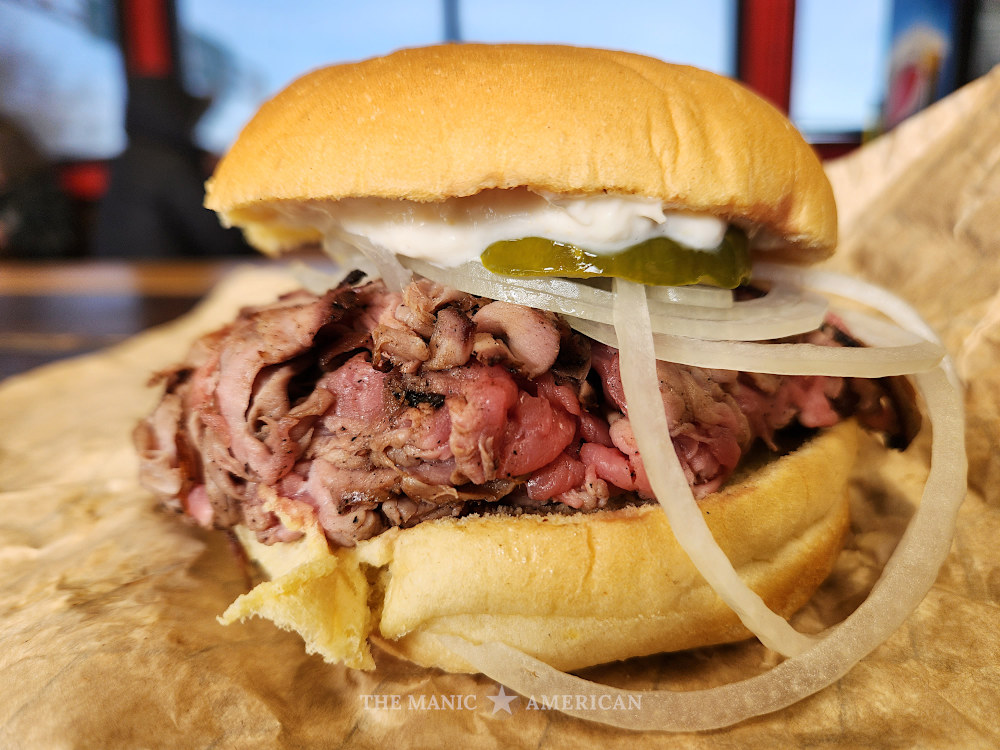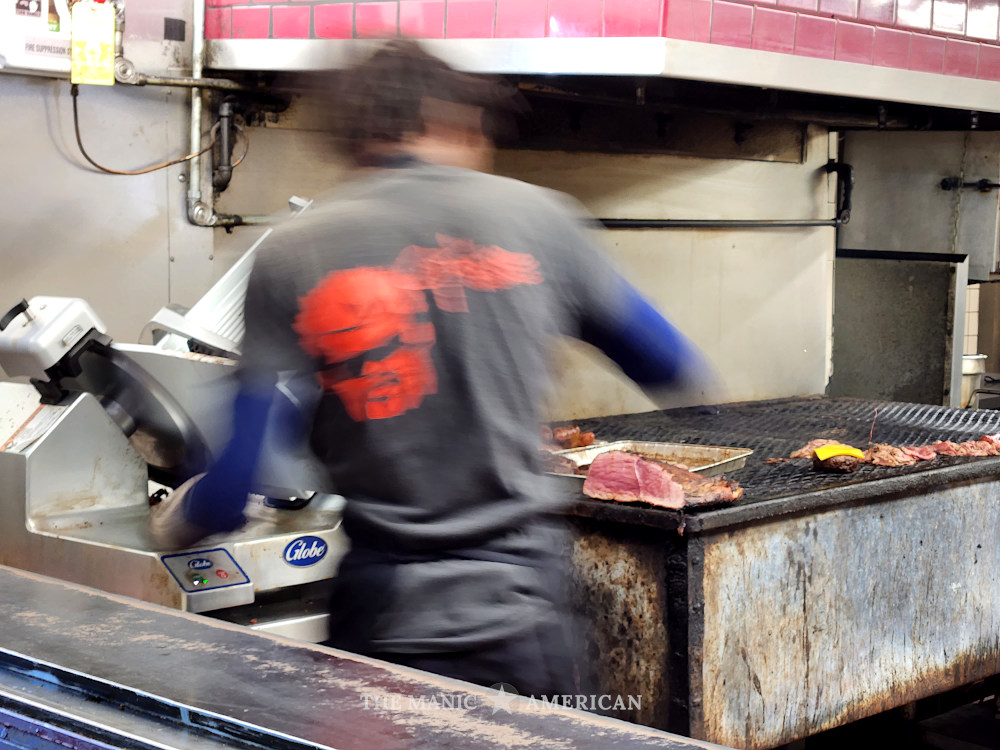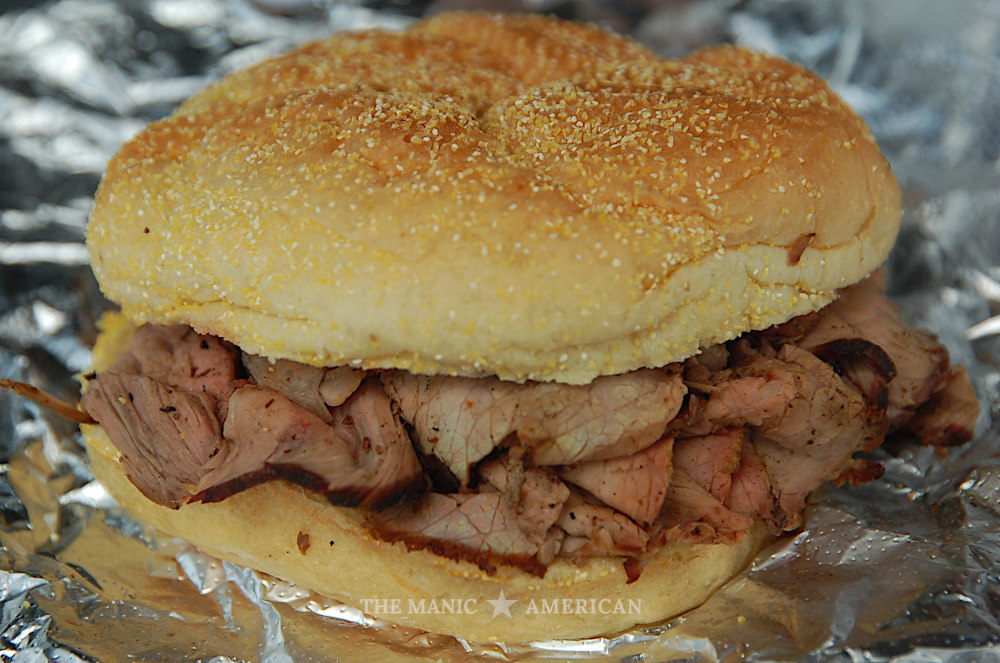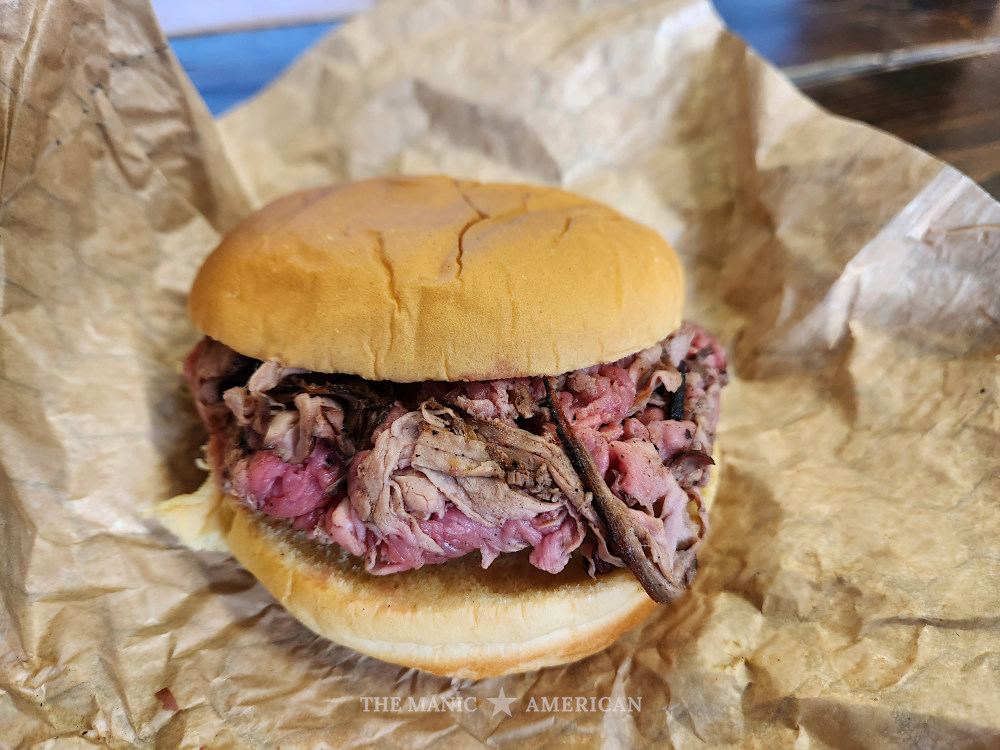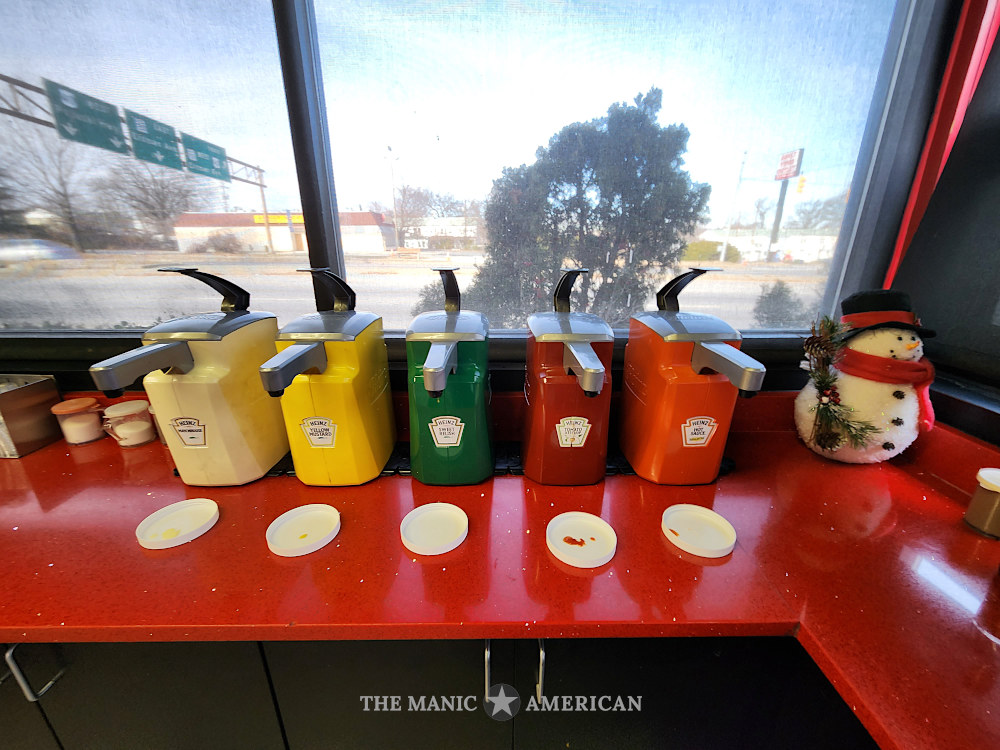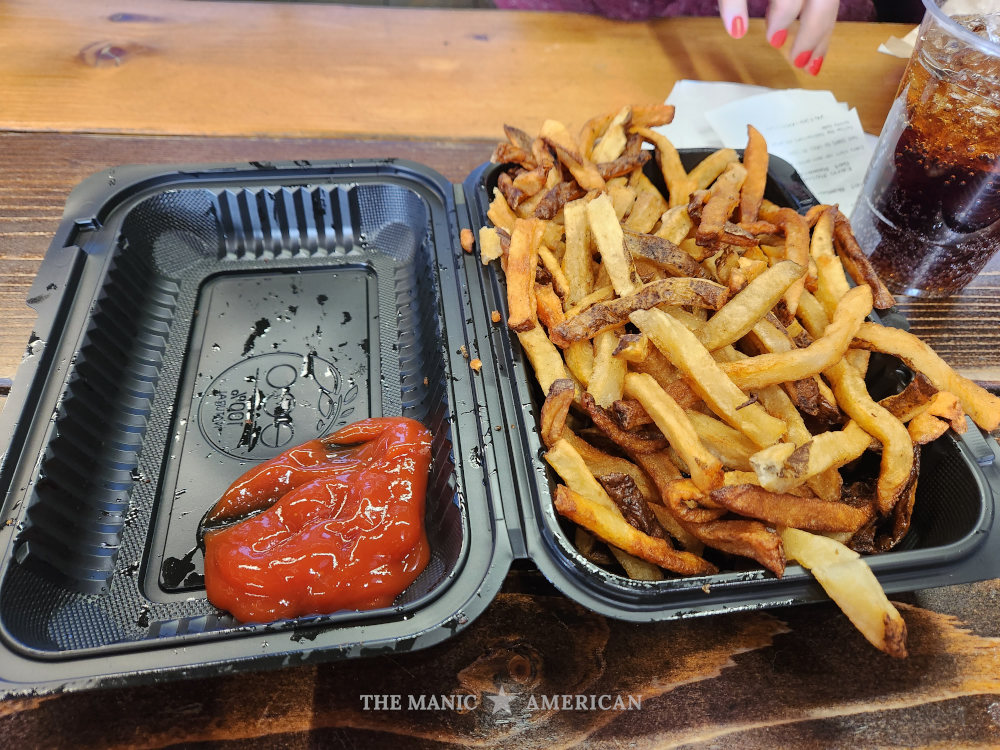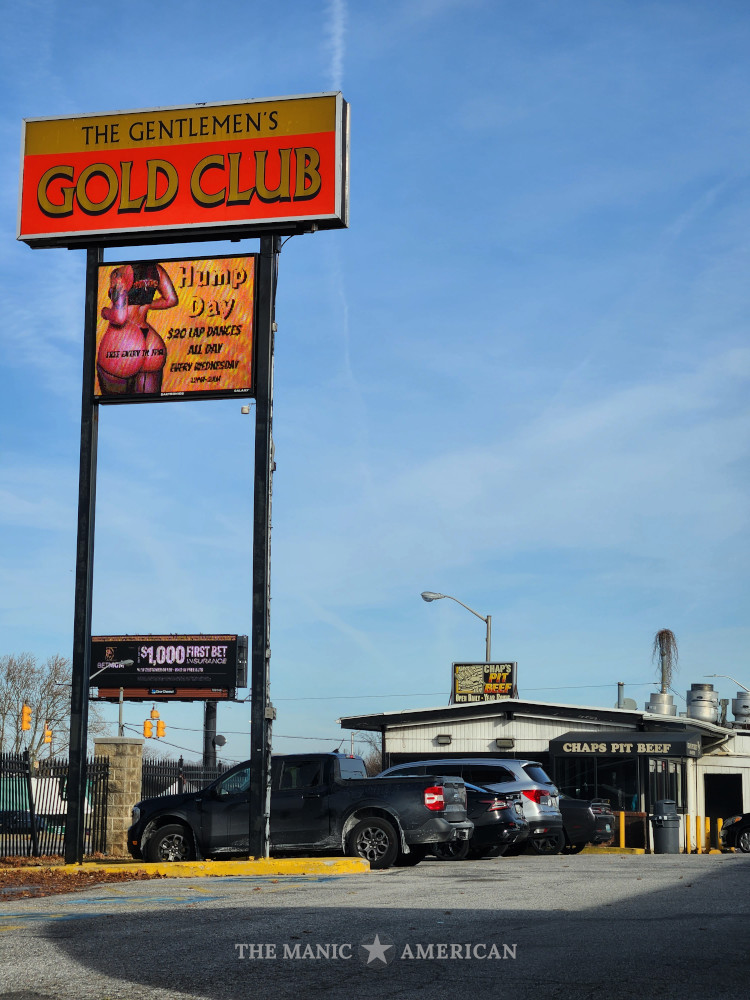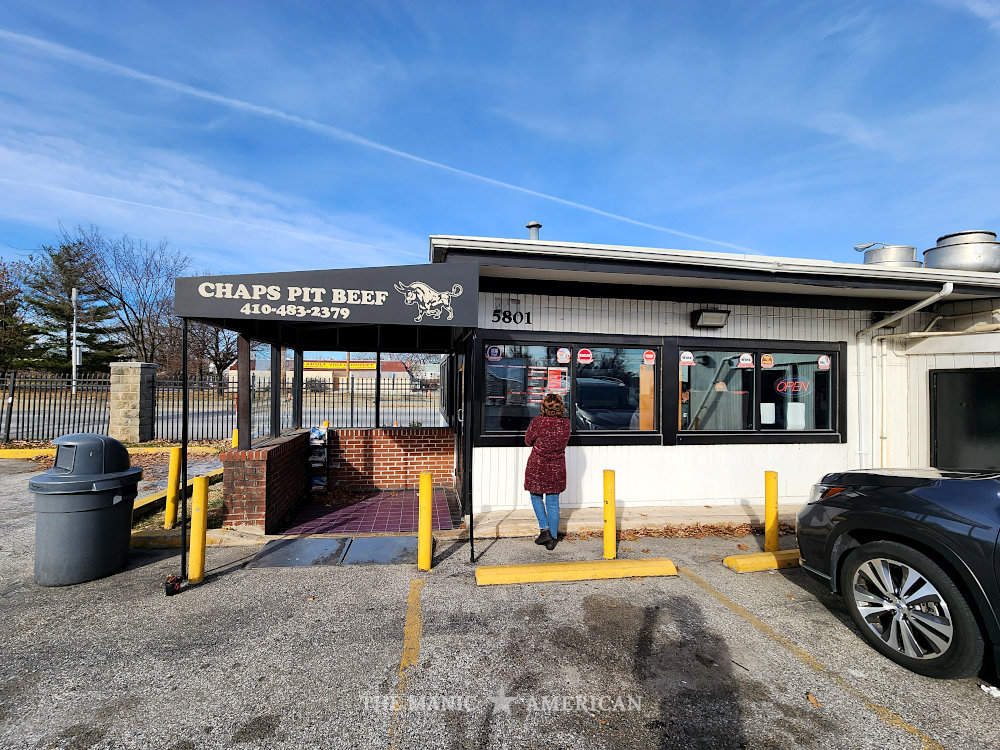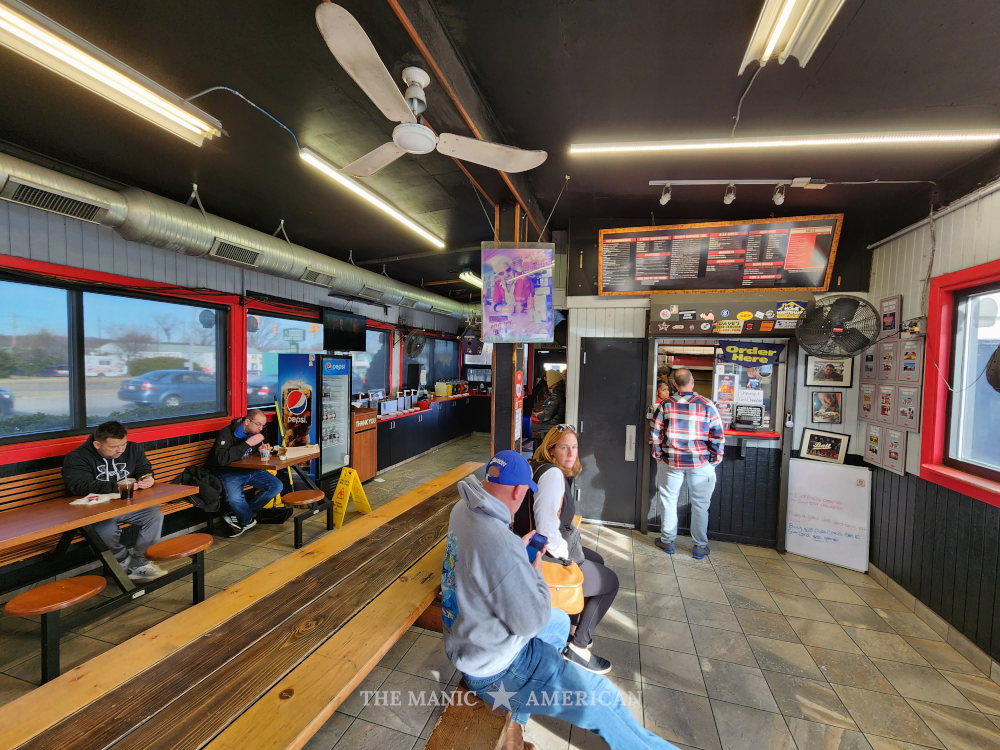In every place there is a restaurant that transcends commerce to become a living emblem of the local culture, a planted flag that requires consistent, sustaining effort. This is true of establishments like the Skylight Inn in North Carolina and Santarpio’s in East Boston. But I’m also thinking about Chaps Pit Beef on the east side of Baltimore City.
The Chaps Sandwich
Since 1987, this wooden shack in the parking lot of a strip club has turned out one of the more famous versions of the city’s signature sandwich, the pit beef. You might already know what pit beef is. But if you don’t, it’s a cross between barbecue and roast beef. Full bottom rounds, or large cuts of beef from the rear leg of the cow, are dry rubbed and cooked over a charcoal pit. The fat cap is trimmed off, the beef is seared again, then it’s sliced to order using a deli slicer. And sliced thin – you can hear and see the work both slicer (machine) and slicer (human) do to get consistently thin cuts.
Just after you order your sandwich, Chaps does something a little extra that most places don’t do. Rather than piling the pillowy beef slices directly on your roll, Chaps sends them back to the pit for a smoky reheat, where they’re also hit with a dash of rub.
Historically, each pit beef is made to order on a Kaiser roll, a nod to the influence of German immigrants on Baltimore. But on our recent visit, we received potato rolls – which may have been slightly more delicious, and no doubt supplied by one of the commercial Amish bakeries just to the northeast. Has the potato roll officially replaced the Kaiser? Maybe it was a holiday disruption. Here’s my very first Chaps pit beef, from summer 2009:
We hit Chaps the day after Christmas, when we realized that our drive home from visiting family in the DC suburbs would take us within a block of the restaurant. We pulled in through the back alley, and there was the crew, flying the flag, bearing the torch, putting in the work, and serving great sandwiches. The customers were a mix of local, blue-collar workers and holiday road-tripping families who probably saw Chaps on Diners, Drive-ins, and Dives. All are welcome.
It’s up to you to add the fixins to your sandwich. I always go with the traditional white onion and tiger sauce. Tiger sauce is a sharp, horseradish-mayo concoction that was originally invented by a kosher horseradish company in Baltimore.
The house-cut fries are great, too. Make sure to try them with malt vinegar as well as ketchup.
One of these days I’ll try something on their menu that’s not pit beef. There are deli sandwiches with combinations of pit-grilled meats, plus burgers, ribs, and even fish and chips.
Exploring the Chaps-Lands
I’ve been to Chaps four or five times now. Not until this last visit did I realize how familiar the surrounding area was to me.
Yes, there is the strip club next door, everyone talks about that. But there are also auto salvage yards as far as the eye can see, tire shops, welding businesses, state DOT facilities, the Baltimore City tow pound, and the Baltimore City Fire Academy. Based on Street View, nearby rowhouses have been torn down recently so that one more parking lot could be installed. And an entire city block was turned into a gigantic gas station that also serves pressure-fried chicken. An adult video store directly across from Chaps sits abandoned.
To put it bluntly, this chunk of the east side is a no man’s land. It’s the place where they put stuff that everyone needs but no one wants, because the locals probably don’t have the time, energy, know-how, or connections to fight back politically. It’s the place where The Greek and the dock workers lived in The Wire, Season 2, the one where the show’s largely White, upper-class audience seems to always get bored watching White, lower-class characters and plotlines.
In short, Chaps sits in or near the College Point of Baltimore (College Point is the NYC neighborhood where I grew up). Perhaps a more apt NYC comparison would look at the adjoining neighborhoods of College Point and Willets Point. The boundary area between those neighborhoods historically housed scrapyards, trash transfer facilities, strip clubs, and the city tow pound. It now hosts the NYPD Academy, as well. Of course, the east side of Baltimore falls a stadium or two short when compared to these sister areas in NYC.
And yet, some dudes stood there in the 80s and said, we have our land here, and we’re going to build our thing on it. That stretch of Pulaski Highway had long been lined with unsightly things that helped keep the city alive. Perhaps providing literal sustenance to its people was a logical next step. As we say here at The Manic American, the Chaps founders “matched creativity with labor,” and that’s what we celebrate.
Chaps lives on and seems to grow better known every year. I hear there are franchise opportunities available, if you’re interested.
Essay & photos by Rob Bellinger
Published: 12/31/2022
Last visit to Chaps: 12/26/2022
More Great Sandwiches:
- How Philly Became the Best Sandwich City in America
- 2 Hours at Versailles, “The World’s Most Famous Cuban Restaurant,” in Miami, FL
- Tops Bar-B-Q: Home of the Barbecue Cheeseburger (Memphis, TN)
- The Capital of East Carolina Whole Hog Barbecue: Photos from the Skylight Inn
